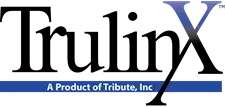
Unleashing Financial Flexibility: The Strategic Advantage of Section 179 for Software and Hardware Investments
In today’s rapidly evolving business landscape, keeping up with the latest technology is not just an operational necessity; it's a strategic advantage. With the enactment of Section 179 of the IRS Tax Code, businesses have an unprecedented opportunity to upgrade their software and hardware while enjoying substantial financial benefits. This provision is particularly timely as we navigate the intricacies of the digital age, where the right technological tools can significantly impact productivity, efficiency, and overall competitive edge.
Understanding Section 179
Section 179 is designed to encourage businesses to invest in themselves and aims at both small and medium-sized enterprises. It allows businesses to deduct the full purchase price of qualifying equipment or software purchased or financed during the tax year. This means if you buy or lease qualifying equipment, you can deduct the FULL PURCHASE PRICE from your gross income. As of 2024, the deduction limit is a generous $1,220,000, with a total equipment purchase limit of $3,050,000 before the benefit begins to phase out. This adjustment represents an increase from the previous years, underscoring the government's push for businesses to invest in their growth through technology.
The Case for New Software and Hardware
The versatility of Section 179 positions it as a particularly beneficial tool for technology investments. Qualifying purchases can include both new and used computer hardware and off-the-shelf software, provided these are used for business operations and meet other criteria detailed by the IRS.
Immediate Expense Deduction: Rather than capitalizing an asset and depreciating it over time, Section 179 allows businesses to take an immediate deduction on the full purchase price. This can result in significant tax savings, bolstering cash flow and enabling further reinvestment in the business.
Encouragement for Upgrades: In an era where technology can become obsolete in a matter of years (if not months), the financial incentives offered by Section 179 encourage businesses to consistently upgrade their systems. This regular renewal can significantly increase operational efficiency and ensure that companies remain competitive in their respective fields.
Strategic Financial Planning: Leveraging Section 179 for technology investments can be a strategic financial move. By reducing taxable income, businesses can improve their bottom lines while acquiring essential assets. This provision essentially lowers the net cost of purchasing or leasing, making it a financially savvy strategy for capital expenditure planning.
Maximizing The Benefits
To maximize the advantages of Section 179, businesses should:
- Plan Purchases Wisely: Assess both current and future technology needs to make strategic purchases that align with business goals.
- Consult with Professionals: Engage with a tax professional or financial advisor to ensure that investments qualify and are optimally structured to take full advantage of Section 179.
- Consider Financing: With the provision also applicable to financed purchases, businesses do not necessarily need to have the full cash outlay upfront, opening the door to preserve cash flow while still benefiting from the deduction.
Section 179 presents a compelling case for businesses to act now on software and hardware investments. The immediate tax benefits, coupled with the strategic advantage of leveraging the latest technology, create a win-win scenario. As we look to 2025, understanding and utilizing Section 179 can be a game-changer for businesses aiming to propel their operations forward and solidify their competitive standing in the digital era. Don't miss this opportunity to foster growth within your company—request a TrulinX demo today and discover how it can help elevate your business
